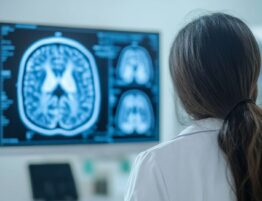The human brain possesses a remarkable and awe-inspiring ability: the capacity for change and adaptation throughout life. This phenomenon, known as neuroplasticity, represents the brain’s ability to reorganize itself by forming new neural connections. For decades, scientists believed the brain was a static, unchangeable organ after reaching a certain age.
We were taught that once we reached adulthood, our brain’s structure was fixed and immutable. This belief has since been completely overturned by mounting scientific evidence. We now understand that the brain is a highly dynamic and flexible organ that constantly changes in response to our experiences, thoughts, and actions.
This revolutionary understanding has opened new possibilities for everything from stroke recovery to enhancing cognitive abilities. Rather than viewing the brain as a rigid machine, we now see it as a constantly evolving landscape. This continuous reshaping of what neuroplasticity is and represents our ability to learn, recover, and adapt throughout our entire lives.
How the Brain Adapts
Our brains function like a complex, ever-changing network of highways. When we learn something new — whether it’s riding a bike or playing a musical instrument — we create new roads or strengthen existing ones within this neural network. Every time you repeat an action, practice a skill, or recall information, you reinforce a specific neural pathway.
The more frequently you use a pathway, the stronger and more efficient it becomes. This represents a fundamental principle of how the brain adapts to new demands and experiences. Consider this analogy: if you walk through a field every day, a path will eventually form. The same principle applies to our brains.
Our neurons constantly fire and wire together, communicating through connections called synapses. When we learn, these connections strengthen. Conversely, if we stop using a connection, it can weaken and eventually disappear through a process called synaptic pruning.
Brain Healing and Recovery
Neuroplasticity takes on a truly remarkable form when we consider the brain’s capacity for healing and recovery. After a stroke, traumatic brain injury, or other forms of neural damage, certain brain regions may suffer significant impairment. For decades, the prognosis for such individuals was often discouraging, with the assumption that lost functions were permanently gone.
However, thanks to our deeper understanding of neuroplasticity, we know this isn’t necessarily true. The brain can often find alternative ways to compensate for damaged areas. For example, if the brain region responsible for speech is damaged, other healthy areas can sometimes assume that function.
This recovery process requires time, dedication, and intensive rehabilitation. Through comprehensive therapy programs — including physical therapy, occupational therapy, and speech therapy — the brain can be encouraged to build new pathways. We can train undamaged neurons to take on additional responsibilities, essentially creating detours around the brain’s damaged “highways.”
This represents a powerful testament to the brain’s resilience and its profound ability to reorganize itself, making meaningful recovery possible even after significant injury.
Neuroplasticity and Learning
Neuroplasticity serves as the foundation for all learning throughout our lives. From birth, our brains are in a constant state of adaptation and growth, a process that continues well into old age. Neuroplasticity and learning are inextricably linked — whether you’re acquiring a new language, mastering a musical instrument, or simply remembering someone’s name, you’re actively engaging neuroplastic principles.
When you practice a new skill, your brain literally reorganizes itself to make that skill easier to perform. Musicians, for instance, develop enlarged brain regions dedicated to finger control and auditory processing. The more they practice, the more their brains physically change to support their musical abilities.
This process demonstrates that our brains are not static structures but are constantly being sculpted by our actions and experiences. This means that anyone, regardless of age, can learn new skills and enhance their cognitive function. It also underscores the critical importance of lifelong learning — the more you challenge your brain, the more neural connections you create and maintain.
Brain Rewiring Techniques
To actively harness the power of neuroplasticity, you can engage in various brain rewiring techniques that create new neural pathways and strengthen existing ones. The encouraging news is that many of these practices are simple and can be easily incorporated into your daily routine:
- Learn New Skills. This represents one of the most effective ways to promote neuroplasticity. The activity could be learning chess, taking up painting, or experimenting with new recipes. The novelty of unfamiliar tasks forces your brain to build fresh connections.
- Mindfulness and Meditation. Regular mindfulness and meditation practices can literally change your brain’s structure. Research shows that these practices can increase the size of the hippocampus (crucial for memory and learning) while decreasing the size of the amygdala (the brain’s fear center).
- Physical Exercise. Regular physical activity, particularly aerobic exercise, has a profound impact on brain health. Exercise increases blood flow to the brain, promoting the growth of new neurons and strengthening neural connections. It also improves mood and reduces stress hormones that can damage brain tissue.
- Novel Experiences and Travel. As a brain rewiring technique, putting yourself in a completely new environment forces your brain to adapt to unfamiliar sights, sounds, and social cues. This can range from taking a different route to work to traveling to a foreign country — both challenge your brain in beneficial ways.
- Quality Sleep. Adequate sleep is essential for memory consolidation and the strengthening of neural pathways. During sleep, your brain eliminates unnecessary connections while reinforcing important ones, making learning more efficient.
- Puzzles and Brain Games. Activities such as Sudoku, crossword puzzles, and jigsaw puzzles engage your brain in complex problem-solving, enhancing mental flexibility and cognitive reserve.
These techniques represent powerful tools that anyone can use to enhance mental function and promote long-term brain health. The key lies in consistently challenging yourself and embracing new experiences.
Neuroplasticity for Long-Term Health
The principles of neuroplasticity extend far beyond just learning and recovery. They are a cornerstone of neuroplasticity and learning for long-term health. By actively engaging in practices that promote brain flexibility, we can reduce our risk of cognitive decline and neurodegenerative diseases like Alzheimer’s.
A brain that faces constant challenges and stimulation becomes more resilient over time. Think of your brain like a muscle: without regular use, it weakens. Similarly, a sedentary mind becomes more susceptible to the aging process. By adopting a proactive approach to brain health, you’re not just maintaining current abilities — you’re building cognitive reserve.
This reserve acts as a buffer against future damage or disease. The more neural connections you maintain, the more backup pathways your brain possesses. If one pathway becomes damaged, alternative routes can compensate for it. This explains why people with higher education levels or cognitively demanding careers often show greater resistance to mental decline symptoms.
Simple daily habits can make a tremendous difference: focus on lifelong learning, stay physically active, maintain social connections, and manage stress effectively. These strategies work together to preserve and enhance cognitive function throughout your lifetime.
Conclusion and Practical Tips
So what is neuroplasticity? Neuroplasticity represents the brain’s incredible ability to adapt and change throughout life. It serves as the engine behind all learning, the foundation for injury recovery, and the key to long-term brain health. The outdated belief that the brain remains fixed after a certain age has been thoroughly debunked.
We now understand that our experiences, thoughts, and actions continually shape our brains. This realization is incredibly empowering because it means we’re not passive observers of cognitive decline — we’re active participants in our brain’s health and development.
To harness this power effectively, consider these practical strategies:
- Embrace Lifelong Learning. Cultivate a lifelong curiosity. Read books, listen to podcasts, watch documentaries, and continuously seek new knowledge and experiences.
- Stay Physically Active. Exercise represents one of the best investments in brain health. Aim for at least 30 minutes of moderate exercise on most days of the week.
- Prioritize Quality Sleep. Maintain consistent sleep hygiene by going to bed and waking up at the same time every day. This helps your brain consolidate memories and repair itself.
- Eat Brain-Healthy Foods. A diet rich in fruits, vegetables, healthy fats, and antioxidants supports optimal brain function and protects against cognitive decline.
- Maintain Social Connections. Social interaction provides powerful brain stimulation. Spend time with friends and family, or join clubs and groups that share your interests.
By embracing these principles of how the brain adapts, you can take control of your cognitive health and unlock your brain’s full potential. The journey toward a more adaptable and resilient brain begins with a single step — or, in this case, a single new thought or action. It’s never too late to start rewiring your brain for a healthier, more vibrant future.











Please, leave your review
Write a comment: